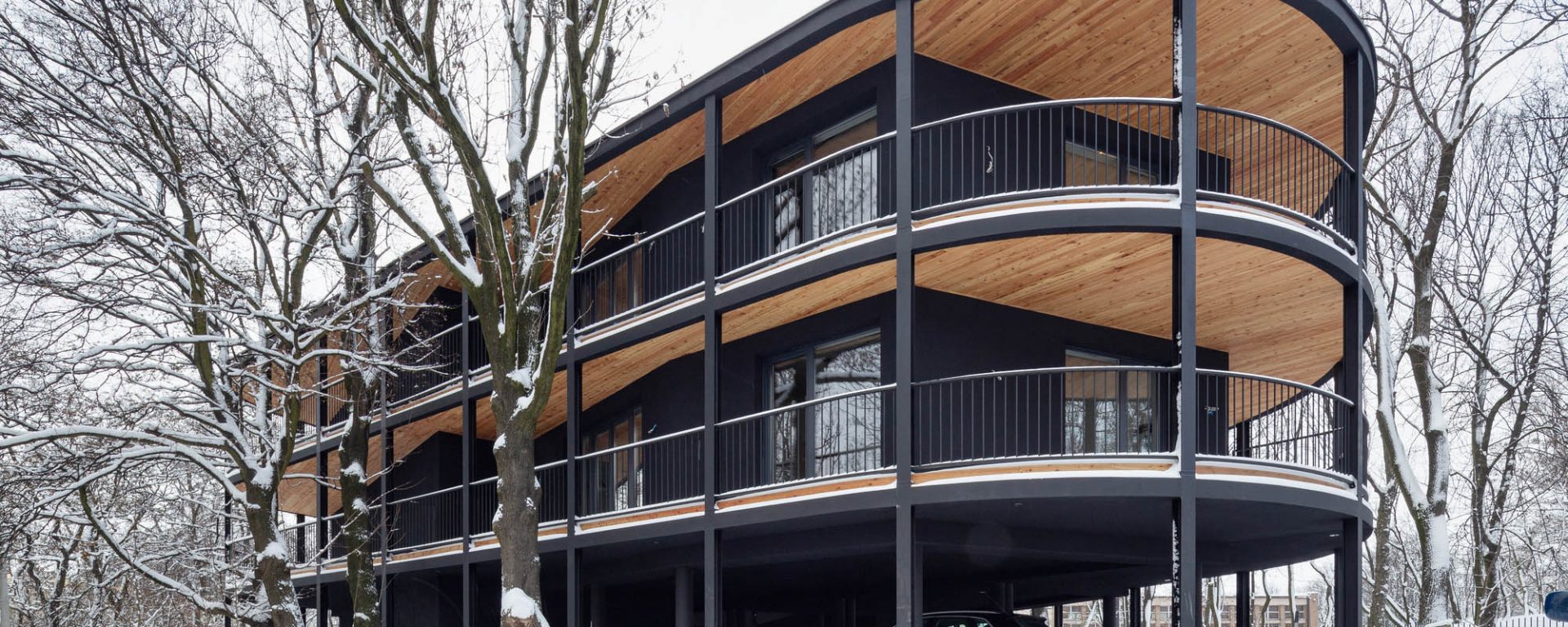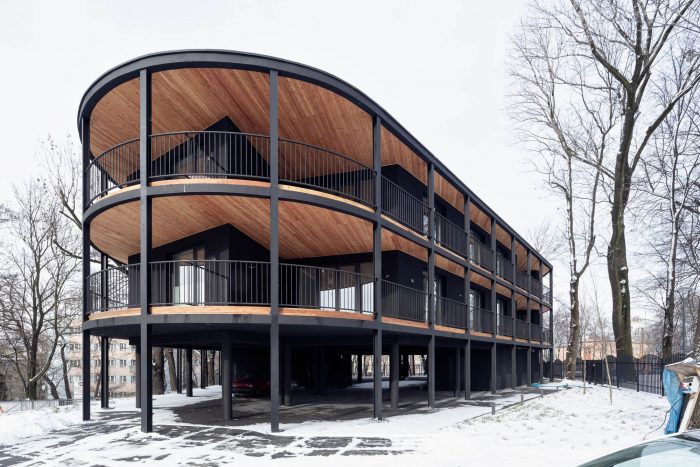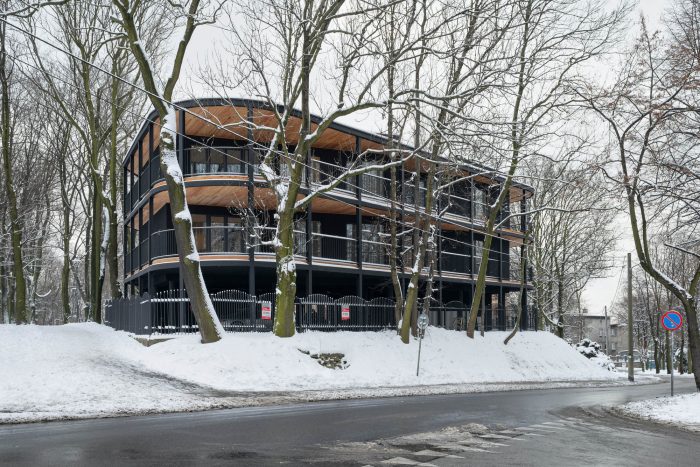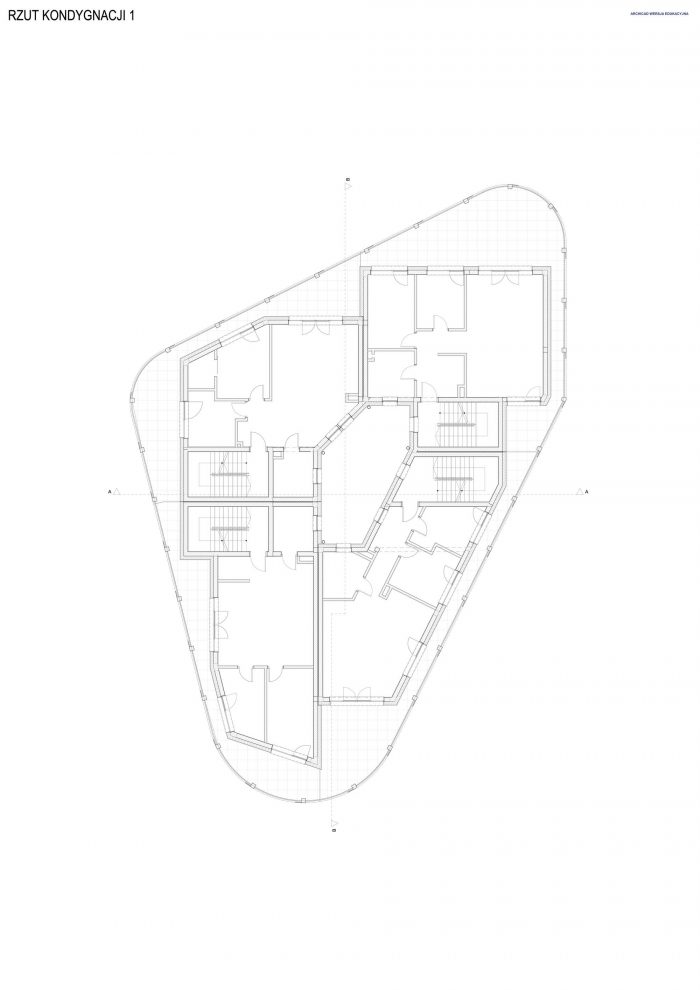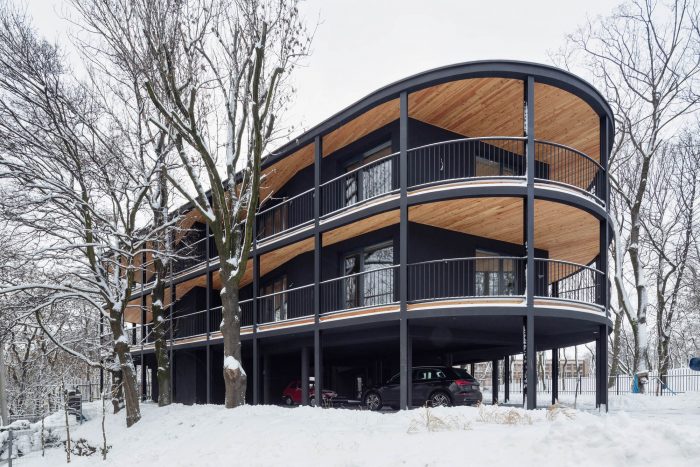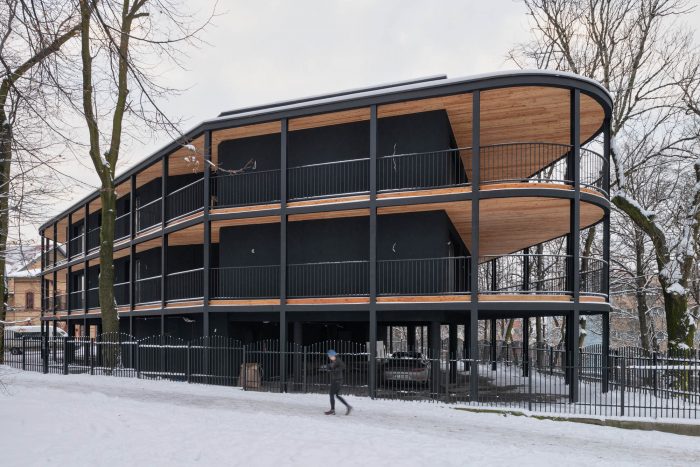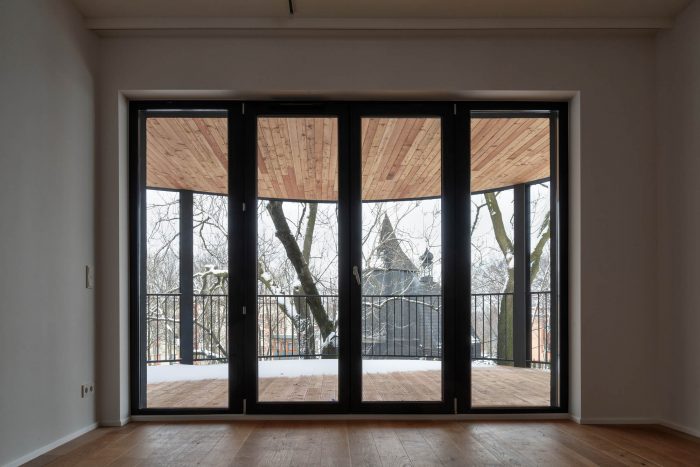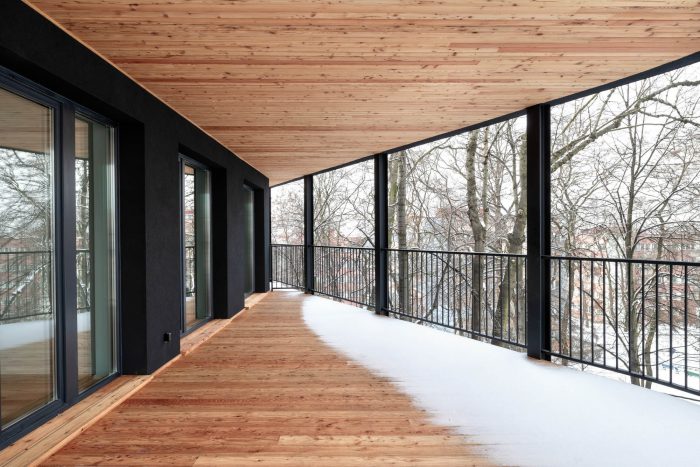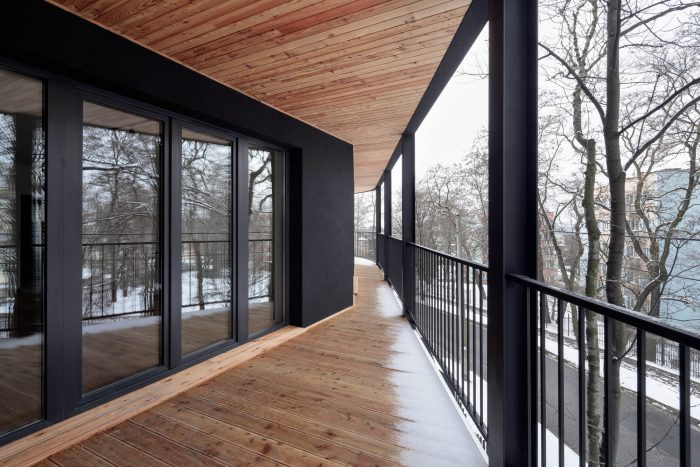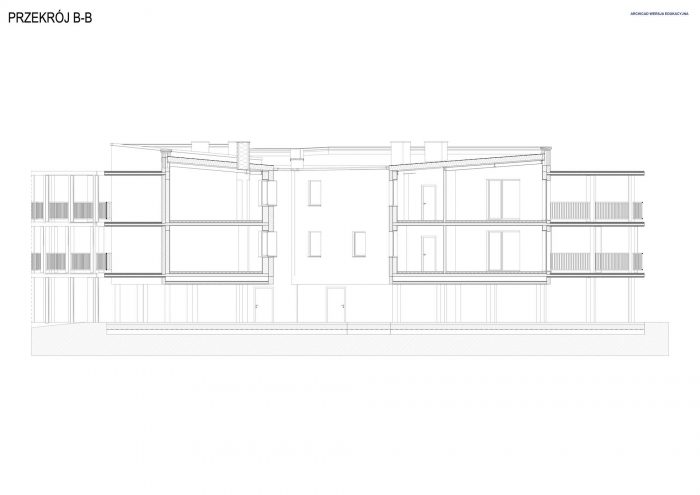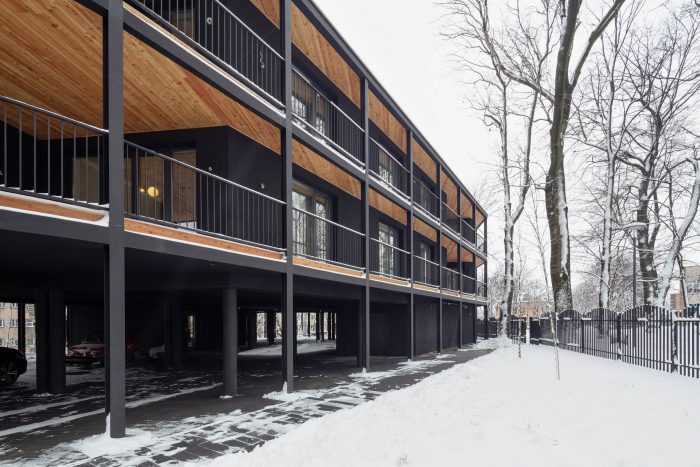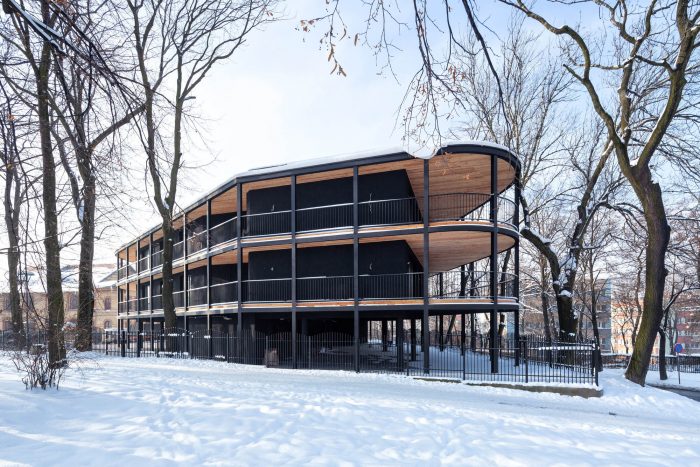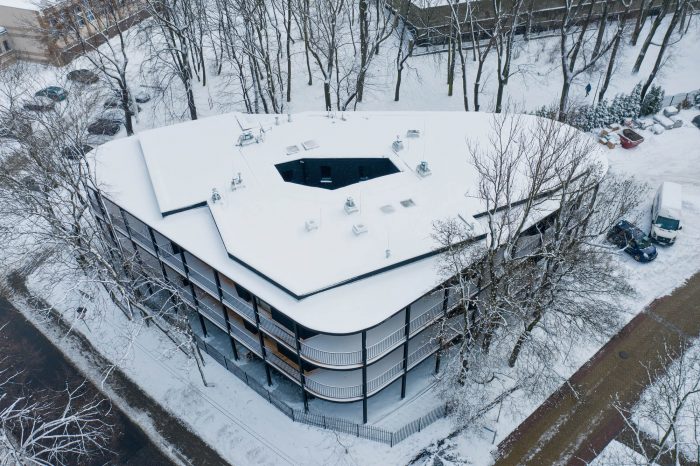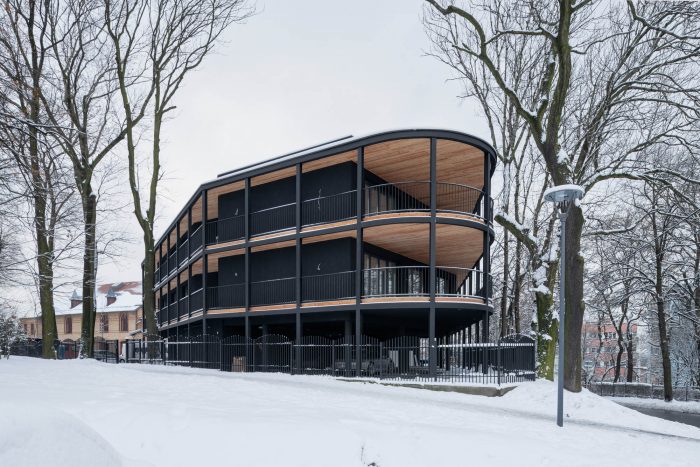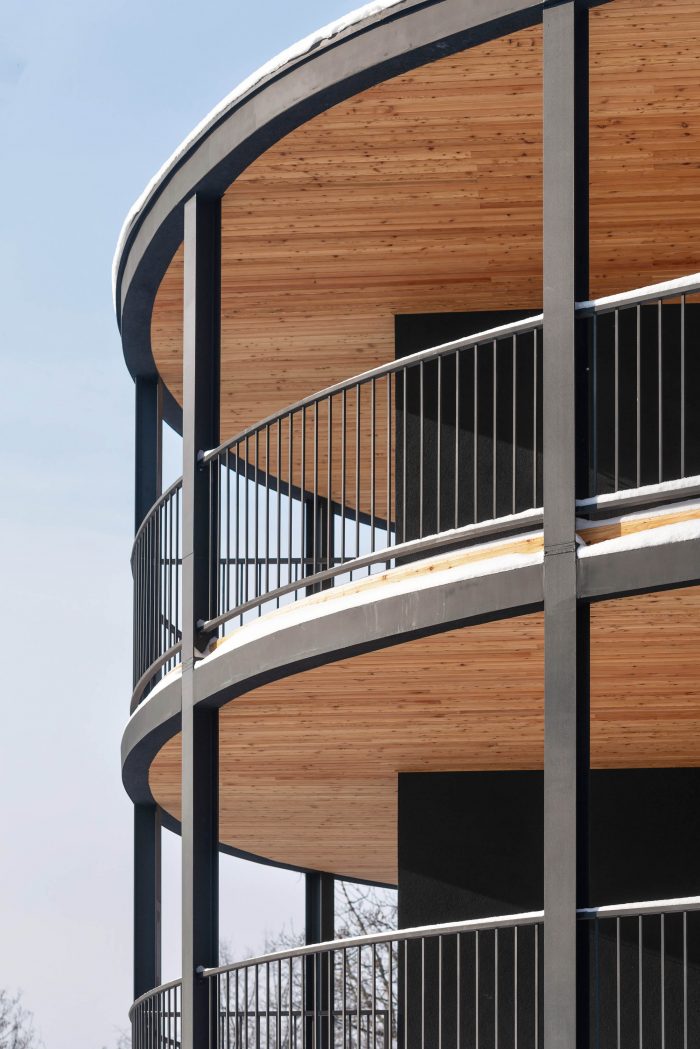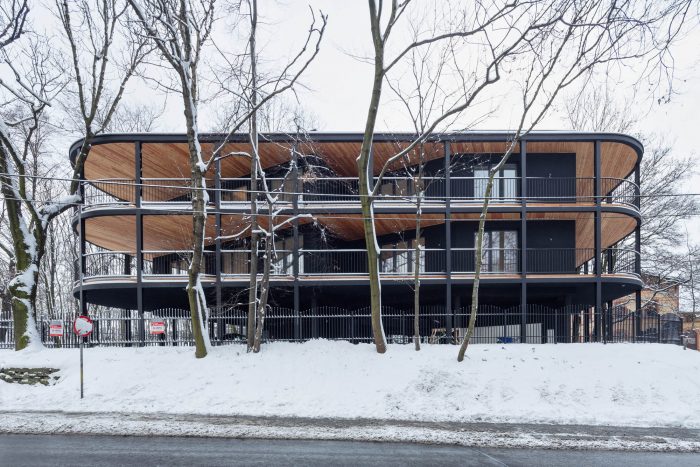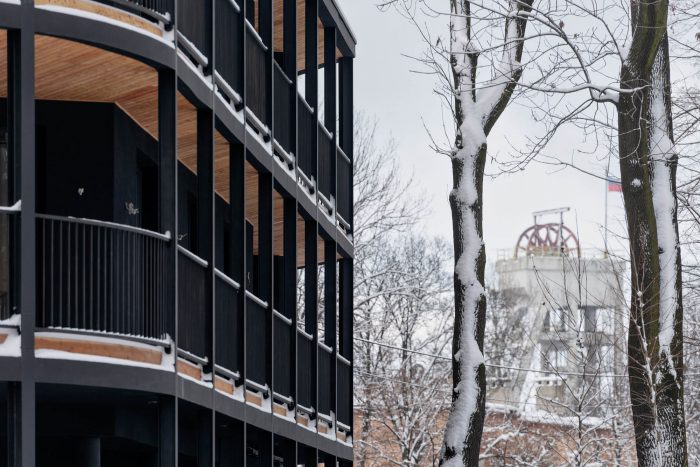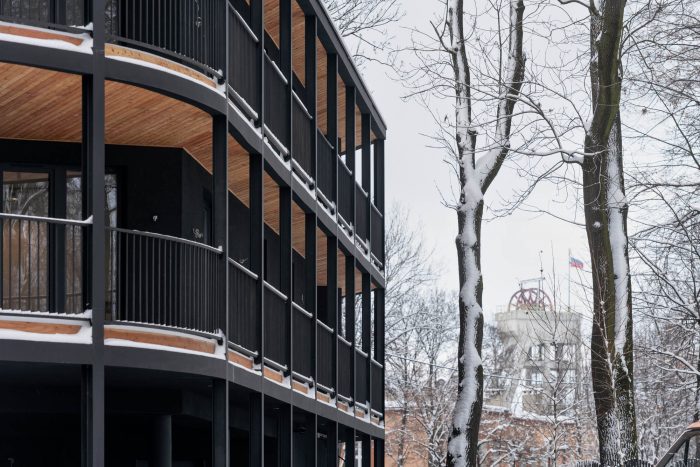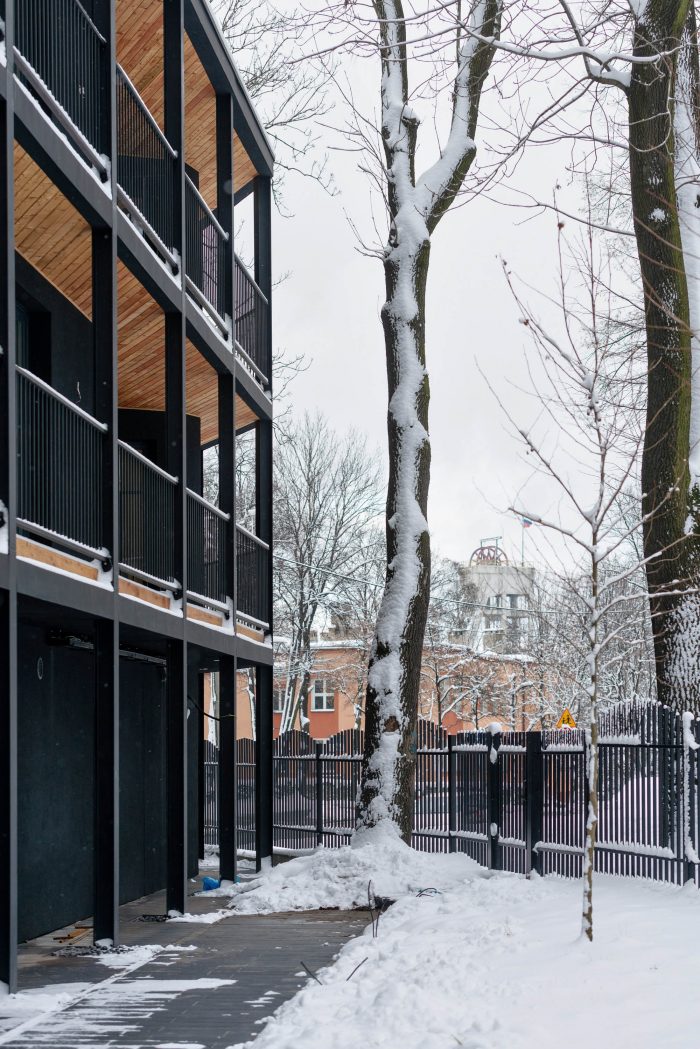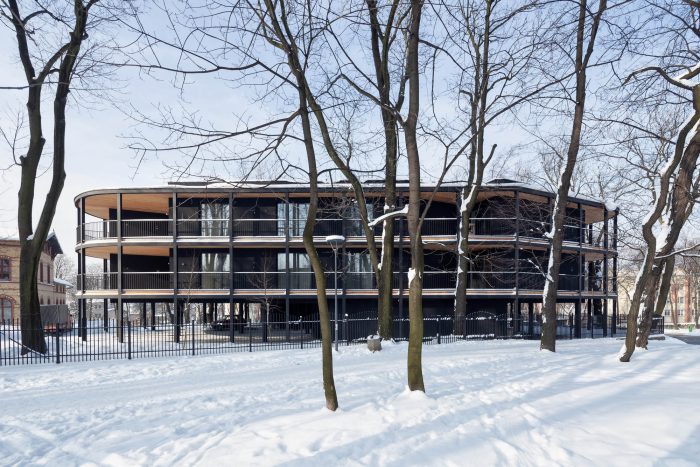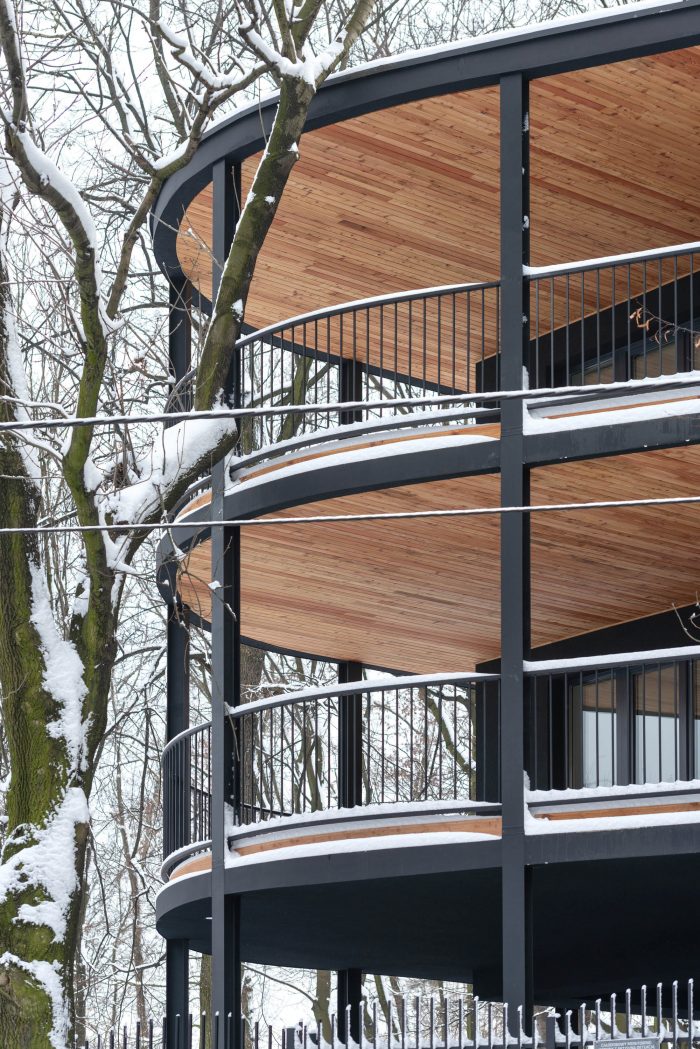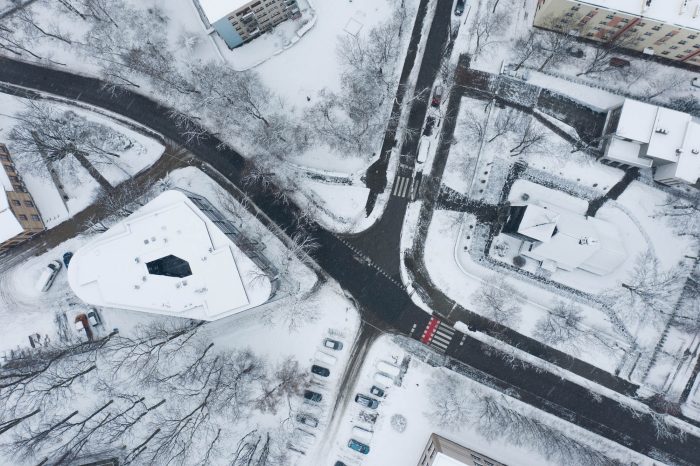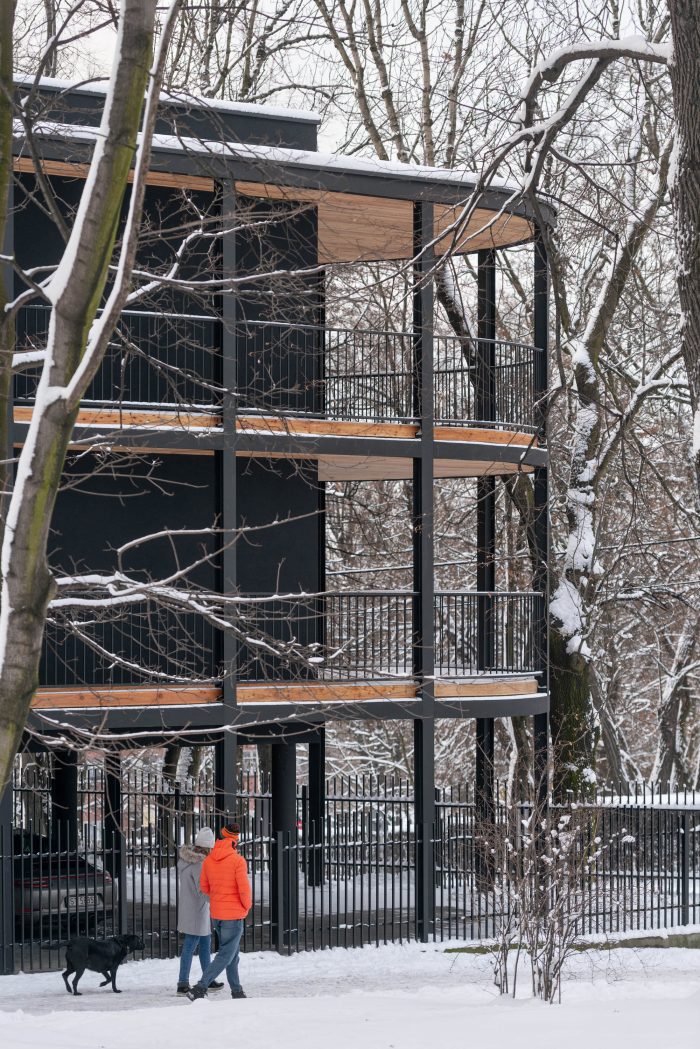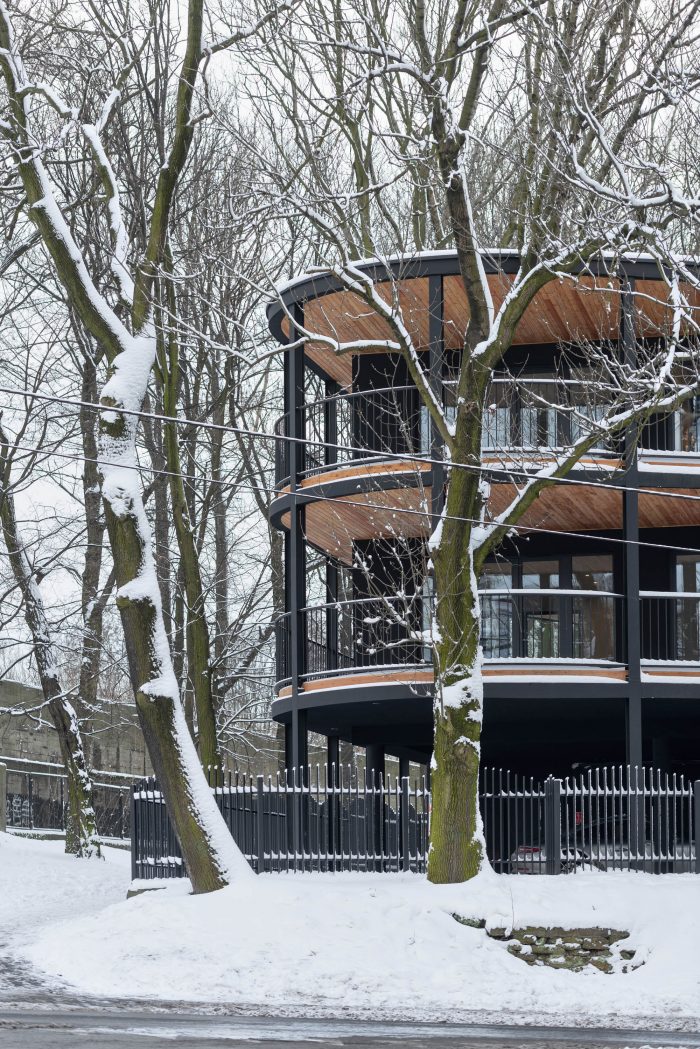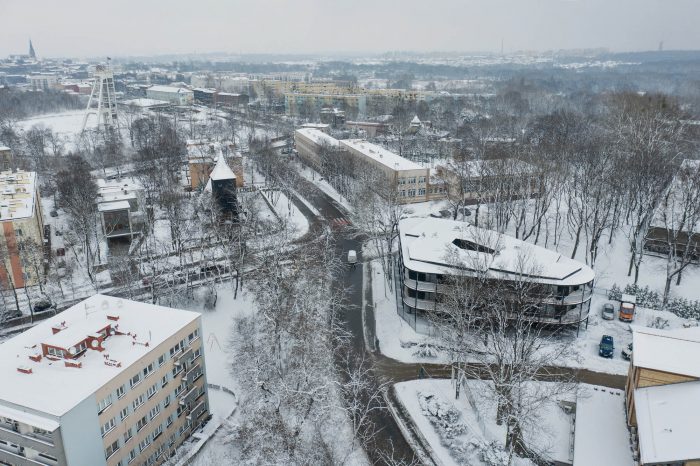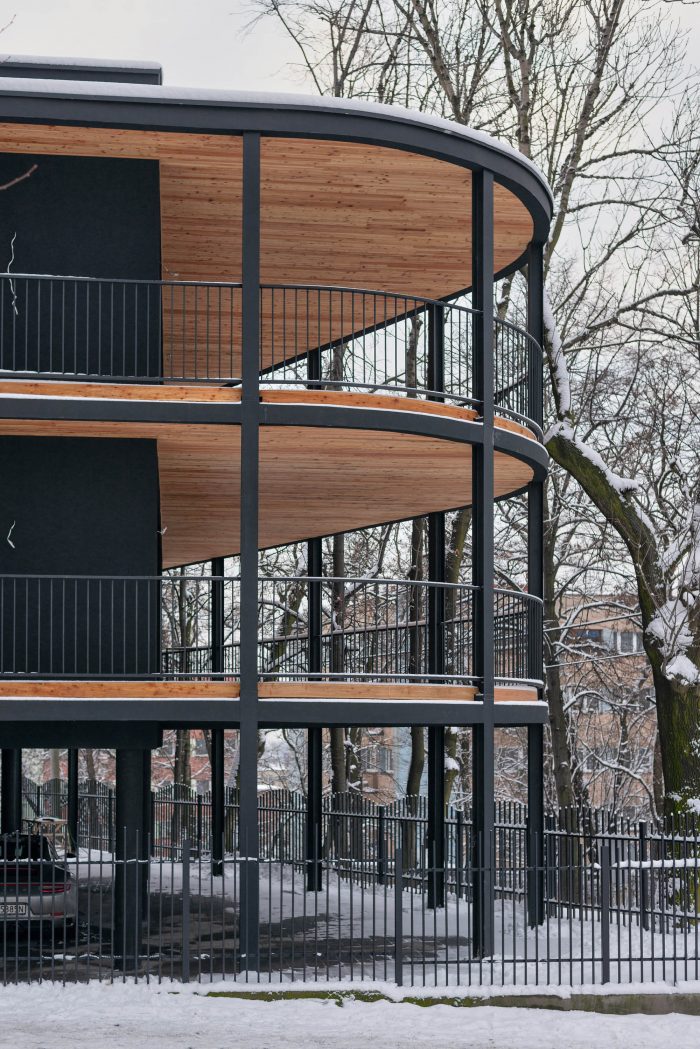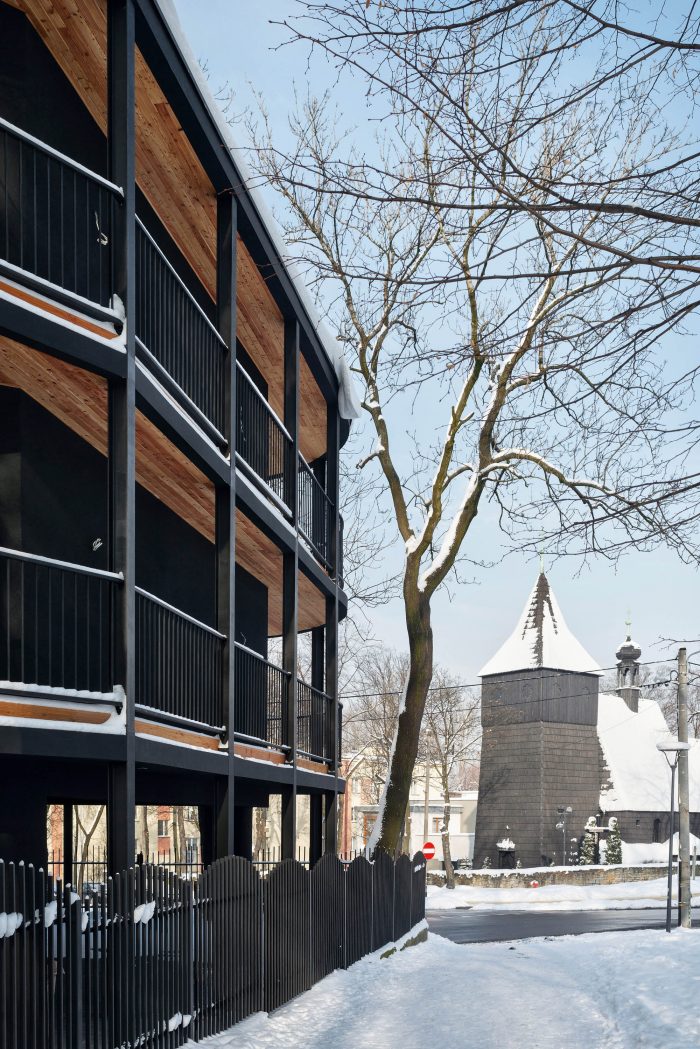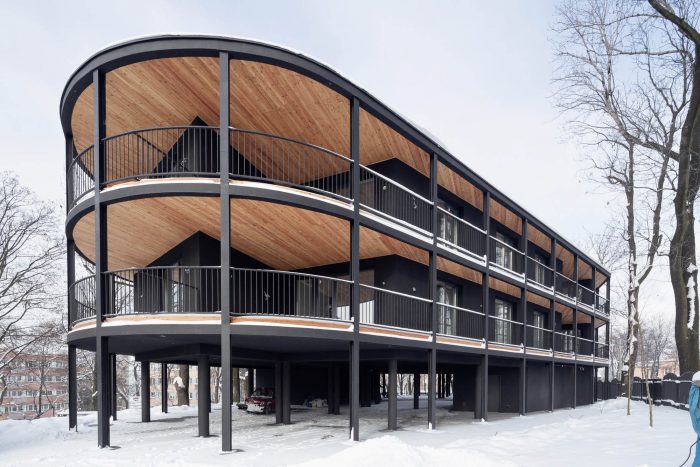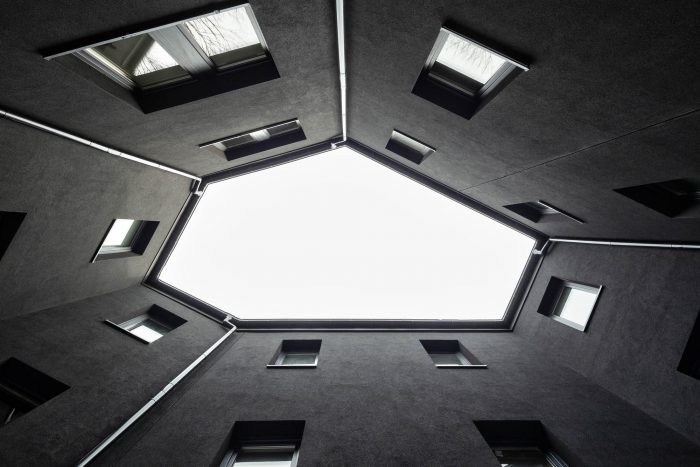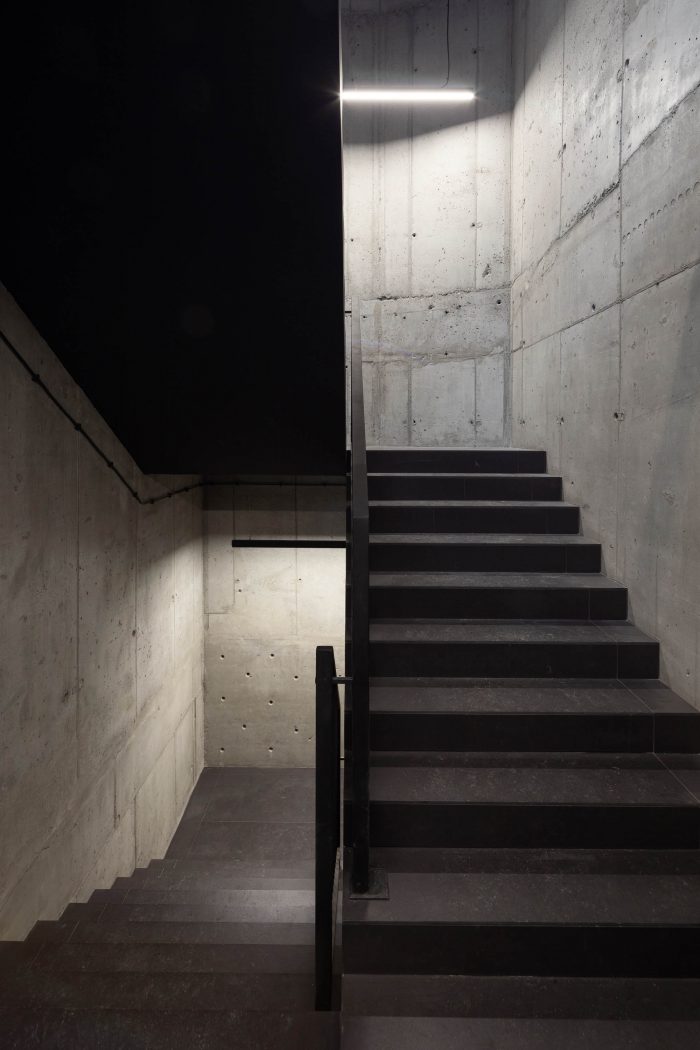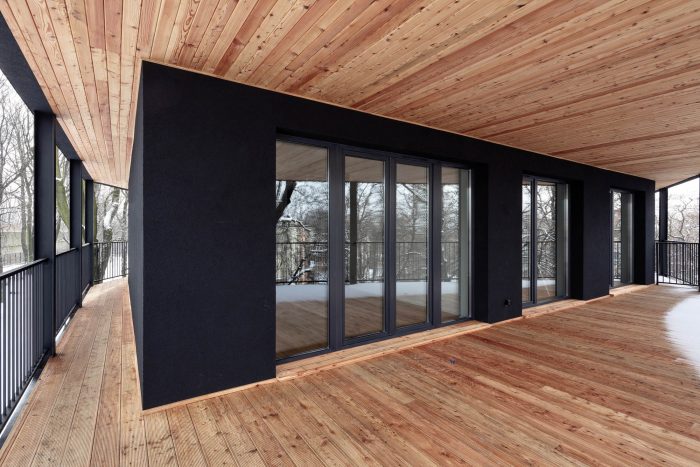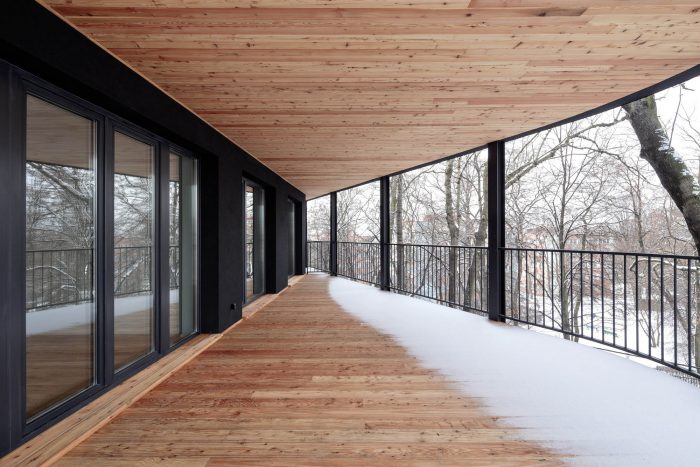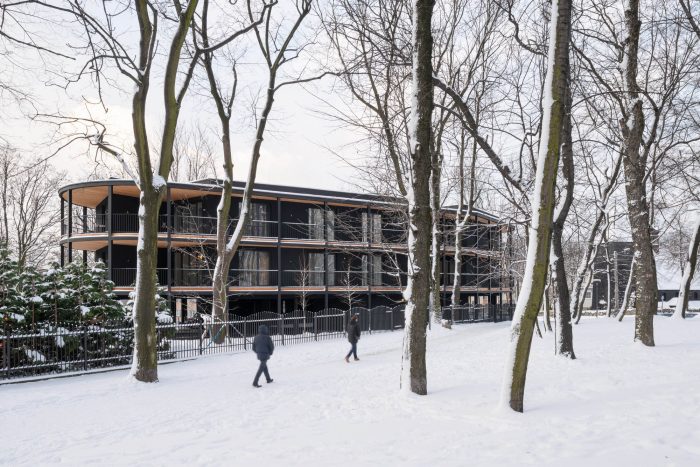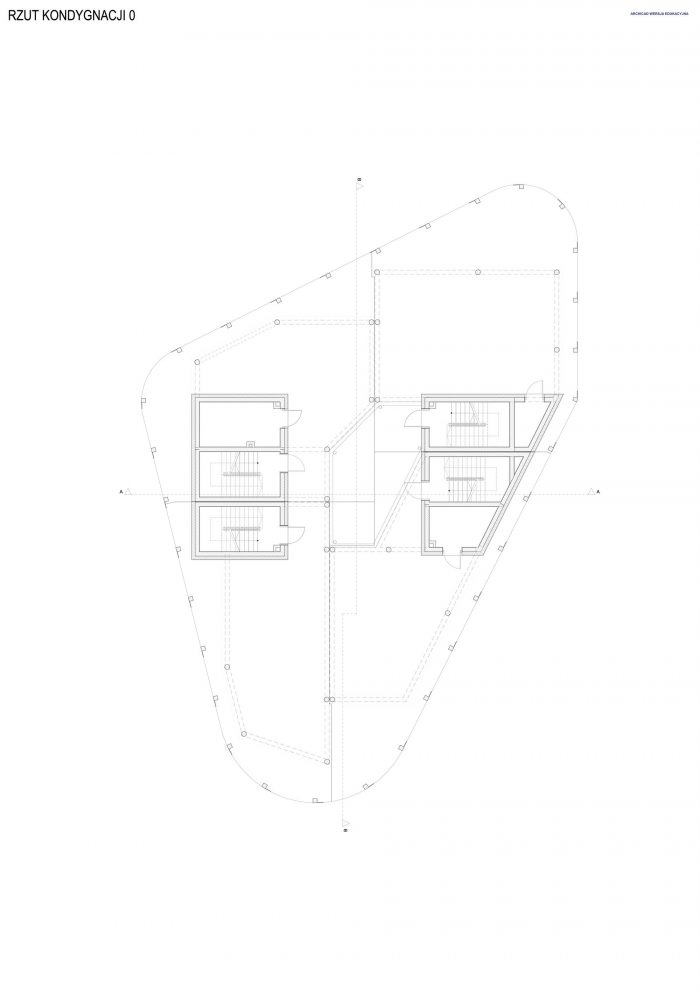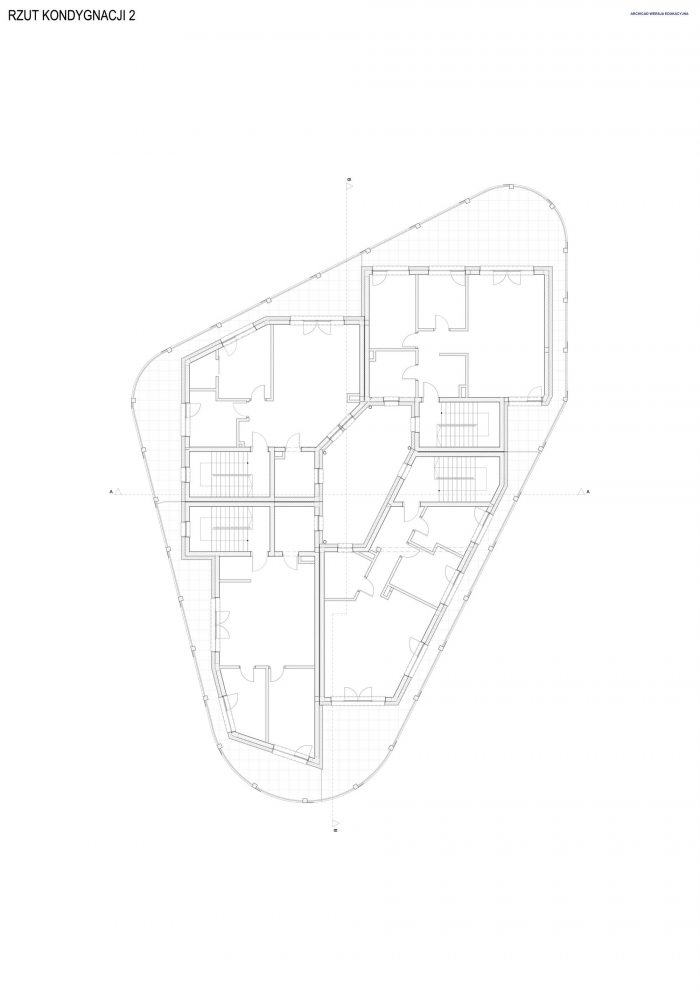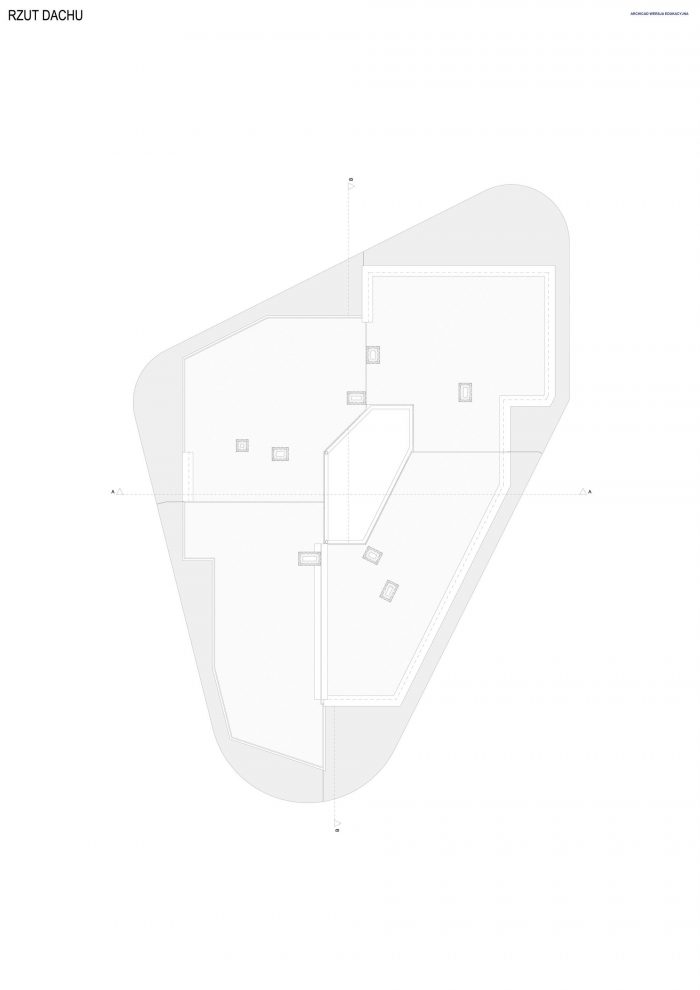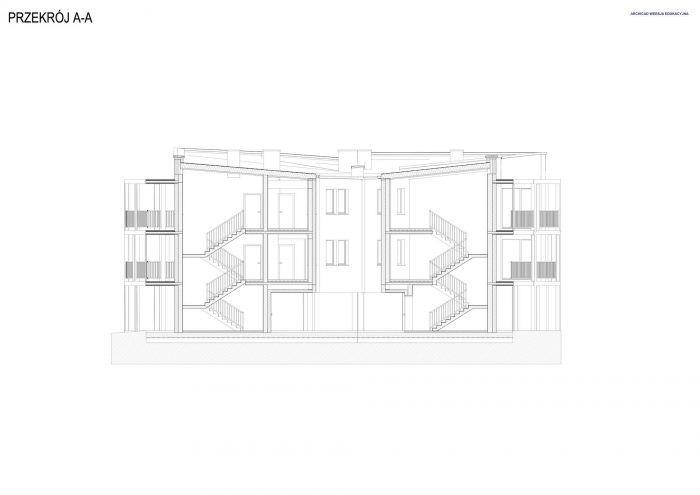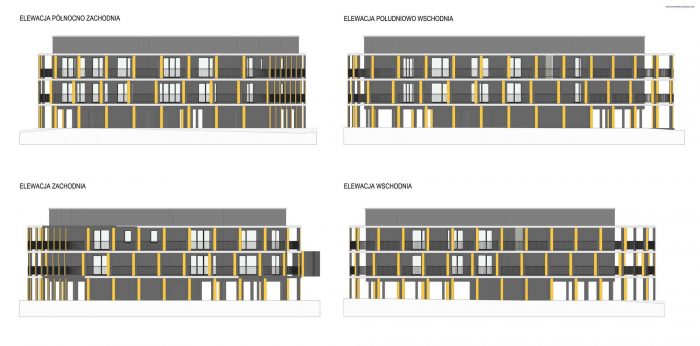这个地方的独特背景以及在这个独特的区域实施新组织可能带来的负面影响,意味着塑造一个新建筑的决定并不容易,必须直接参考这些准则,而不是与之竞争,并以现代的方式对环境的独特性做出 “回应”。由于预算有限,而投资者的期望值又很高,所以任务更加艰巨。
The unique context of the place and the potential negative consequence of implementing a new tissue in this unique area meant that the decision to shape a new building was not easy and had to refer directly to these guidelines, not compete with them, and “respond” to the environment with its uniqueness in a contemporary way. The task was even more difficult as the budget was limited and the investor’s expectations were high.
建筑的想法和形状直接来自于打算开发的区域的不规则多边形,以及在地块上留下尽可能大的树架的想法。这样一个简单的灵感成为塑造建筑的基本准则。创造形体的步骤,首先:根据公寓的功能形成实体,将其功能优化成不规则多边形的形状。
The idea and shape of the building resulted directly from the irregular polygonal shape of the area intended for development and the idea of leaving the largest possible tree stand on the plot. Such a simple inspiration has become the basic guideline for shaping the building. Creating the form step by step, first of all: the solid was formed in accordance with the function of the apartments, optimizing their function into the shape of an irregular polygon.
然后,沿小区边界标出周界线,并在公寓楼周围设置阳台,以获得与周围环境的全景开阔。由于角度尖锐(在环境中是外来的),参考附近战间别墅、树冠和周边绿化的特点,决定将角落进行圆角处理。在下一步,为了向周围开放视野,街区被装扮成木质的观景平台,周围有各种表面,通过实施天井来引入形式上的内部断裂,照亮公寓的内部部分(浴室和公寓的入口区域),住宅部分的楼层被提高了一层,留下未开发的底层作为居民的社会交往和额外的外部功能空间。
Then, a perimeter line was marked along the plot boundaries and the block of flats was surrounded with balconies to obtain a panoramic opening to the surroundings. Due to the acute angles (foreign in the context), it was decided to round the corners, referring to the character of the interwar villas in the neighborhood, tree crowns, and the surrounding greenery. In the next step, to open the view to the surroundings, the block was dressed in wooden viewing terraces with various surfaces around it, an internal break in the form was introduced by implementing a patio to illuminate the internal parts of the apartments (bathrooms and entrance areas to the apartments) and the floor of the residential part was raised by one level, leaving the undeveloped ground floor as a space for social interactions of residents and additional external functions.
以这种方式形成的建筑获得了独特的功能,即大露台的形式,从那里你可以享受周围环境的魅力,由于树木的接近和天井的额外照明,与自然完全融合。在最后一步,立面的节奏被塑造出来。立面的垂直分割被引入,创造出富有表现力的规则方块,安排了自由形成的建筑体量。它确保了立面的分割和节奏是平等的,没有异常的延伸或附加元素的形式。
The building formed in this way received unique features in the form of large terraces, from which you can enjoy the charms of the surroundings, and full integration with nature due to the proximity of trees and additional lighting in the patio. In the last step, the rhythm of the elevation was shaped. Vertical divisions of the façade were introduced, creating expressive regular squares arranging the freely formed volume of the building. It was ensured that the division of the facade and its rhythm were equal and did not have anomalies in the form of extensions or additional elements.
尽管它看起来像一个连贯的公寓楼,但它被设计成一个由四栋单户、两单元的群楼组成的综合体。该建筑被划分为四个独立运作的部分,其中共有8个公寓,建筑的底层大部分是空的空间,作为所有居民的公共部分和技术室(热交换器、电源连接、水表)的建筑入口区域。每个部分在底层都有一个独立的入口,以楼梯的形式通往两个房舍。
Despite the fact that it looks like one coherent apartment building, it was designed as a complex of four single-family, two-apartment group buildings. The building has been divided into four independently functioning parts, in which there are a total of eight apartments and the ground floor of the building is mostly empty space serving as a common part of all residents and the zone of entrances to the buildings with technical rooms (heat exchanger, power connection, water meter). Each part has an independent entrance on the ground floor in the form of a staircase leading to two premises.
每间公寓都有一个沿其外围的不同宽度的露台和一个天井,它还照亮了公寓和浴室的入口区域。该建筑包含8个公寓76-75平方米的2层,可用面积。715,4平方米.
Each of the apartments has access to a terrace of various widths along its outer perimeter, and to a patio, which additionally illuminates the entrance areas to the apartments and the bathroom. The building contains 8 apartments 76-75 square meters on 2 levels with a usable area: 715,4 square meters.
建筑师:Architekt Maciej Franta
面积:300平方米
年份:2021年
摄影:Tomasz Zakrzewski
制造商:GRAPHISOFT
建筑:Maciej Franta
建设:Rafal Hoffmann
卫生:Katarzyna Dudek
城市 : 乔尔佐夫
国家:波兰
Architects: Architekt Maciej Franta
Area: 300 m²
Year: 2021
Photographs: Tomasz Zakrzewski
Manufacturers: GRAPHISOFT
Architecture:Maciej Franta
Construction:Rafal Hoffmann
Sanitation:Katarzyna Dudek
City:Chorzów
Country:Poland

